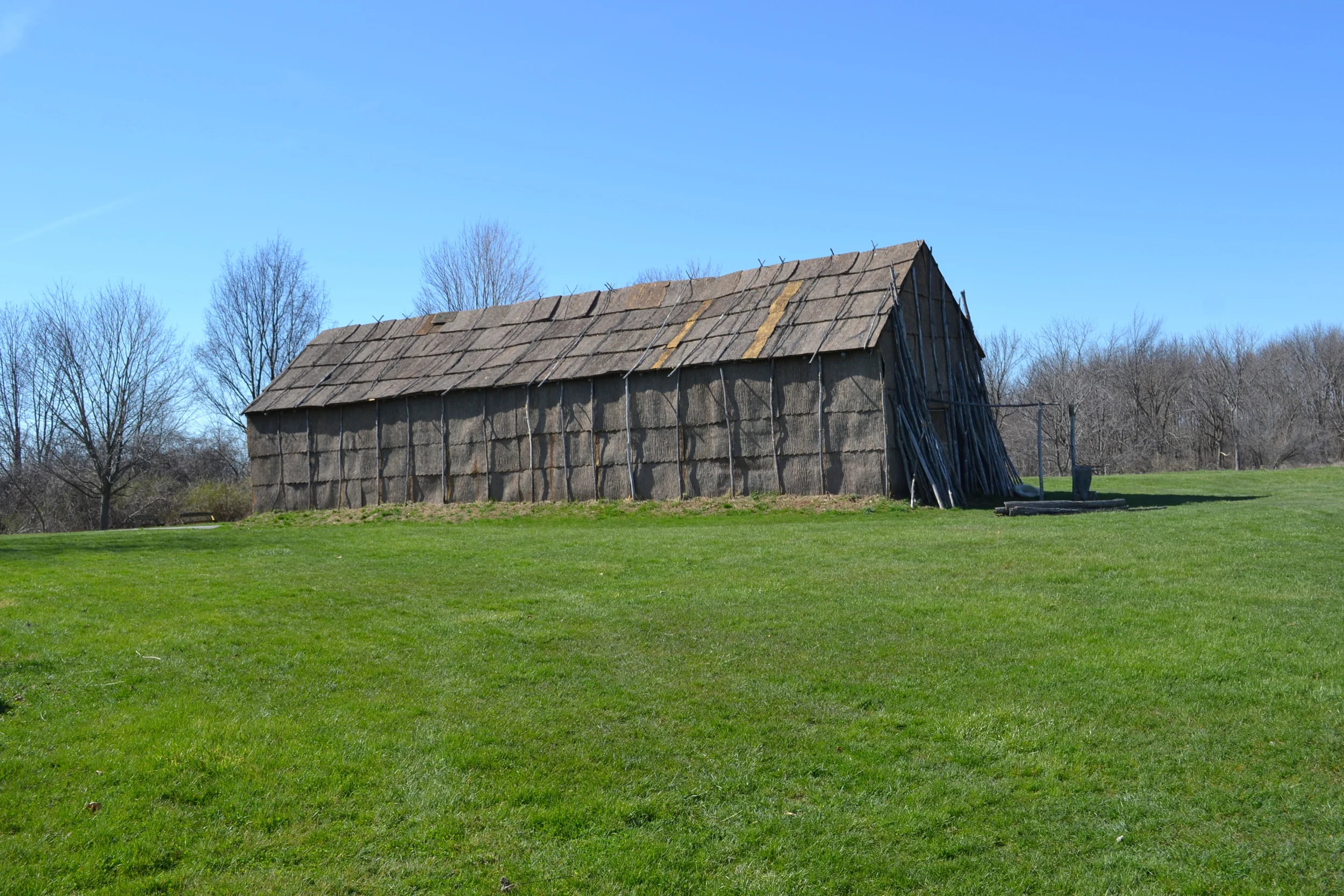On April 15 the New York Archaeological Council (NYAC) met in Rochester, New York preceding the 100th anniversary meeting of the New York State Archaeological Association. Workshops responsive to the crisis in archaeological collections curation were held as the NYAC program on Friday afternoon. Later that night NYSAA held its business meeting, while the conference continued through the rest of the weekend, ending with a guided tour of the new Seneca Art and Culture Center at the Ganondagan State Historic Site on Sunday afternoon. Some of the featured events of the NYSAA conference included the day-long plenary session on Saturday and the keynote presentation by John Hart on Saturday night. Volunteered papers were presented on Sunday morning.
Reconstructing Frontenac Island’s History
Frontenac, Island of History
The Funk Foundation’s New Grant Cycle
The Robert E. Funk Memorial Archaeology Foundation, Inc. is initiating a 2016 grant application and funding cycle for grants of up to $2,000.00. The Funk Foundation grants support archaeological research in New York State, and are ideal to assist stand-alone research projects or studies that are parts of larger projects. For example, Funk Foundation grants have been used successfully to support a range of services such as faunal analysis, radiocarbon dating, petrographic slides, and remote sensing. Grant applications must be received by April 15, 2016. The grant application will be reviewed by the Funk Foundation Board of Directors with award decisions made by June 15, 2016. For the 2016 grant cycle, we intend to fund grants for two applicants. For each grant award, the Foundation will issue a check to the recipient for 80% of the grant amount when the grant is awarded. The final 20% will be paid when the completed report of the grant research is received. Further information including the grant application forms is found on the Funk Foundation website at www.funkfoundation.org. The 2016 grant application forms will be posted during March, 2016. If you have any questions, please email Funk Foundation President Ed Curtin at ecurtin12003@yahoo.com, or call Ed at (518) 884-7102.
Curtin Archaeological Consulting, Inc.— Who We Are
The Lamoka Lake Site, Schuyler County, New York: Was There a Southern Connection?
Lamoka-like stone projectile point technology is not just coastal, but may involve other conditions of a widespread nature (involving access to quarries, or the adoption of technology useful when the acquisition of high quality stone sources required too much time and travel). These conditions would suit immigrant communities if indigenous people controlled the quarry-chert sources. However, Lamoka-like technology is not necessarily diagnostic of immigration, as pebble sources of chert and other knappable stone are widespread in the Northeast, and could have been adopted by indigenous or coalescent native and immigrant communities in order to exploit local stone.
The Enigmatic Archaic Site at Lamoka Lake, New York
Arthur Parker had long suspected that New York State’s prehistoric past featured a very ancient era before the invention of pottery and agriculture. By the early 1920s, he referred to this poorly-documented period as the Archaic Algonkian (Parker 1922). He also recognized another early culture that he called Eskimo-like due to the presence in artifact assemblages of polished stone (especially slate) items similar to those used historically by Inuit people. The Eskimo-like artifacts included ground and polished ulus (a.k.a. semi-lunar knives) and projectile points or knife blades, which in some places were found with other polished stone types such as plummets and gouges (these later were grouped together as diagnostic types of Laurentian Archaic assemblages; Ritchie 1944). Parker (1922) was not sure which was earlier, the Archaic Algonkian or Eskimo-like culture.
Significant Woodland Period Discovery in Eastern New York
Recently there has been some significant news about the Esmond sites located in the Town of Malta, Saratoga County, New York. These are sites currently under investigation by Curtin Archaeological Consulting, Inc. Curtin Archaeological has completed Phase 3 data recovery operations at these sites and is analyzing the complex of data from this work, as well as the Phase 1 and 2 archaeological surveys performed by archaeological consulting firms that preceded Curtin Archaeological at these sites.
Sneak Peek: Lithic Analysis Research for the NYSAA 2015 Annual Meeting
The 99th Annual Meeting of the New York State Archaeological Association begins the evening of Friday, May 1, 2015 and runs through Sunday morning May 3. The meeting, which includes the annual conference on Saturday and Sunday, will be held at the Ramada Inn, Watertown, New York. Kerry Nelson, Meadow Coldon and I will be presenting our paper on Saturday morning at 9:50. Here, Fieldnotes gives you a preview plus a small bonus: a little additional information and “big picture” analysis that is not included in the conference paper due to time limitations.
In Memory of Sarah Bridges
I was saddened to hear of the passing of Sarah Bridges. Sarah was a talented historical archaeologist and administrator of government archaeology programs. I knew Sarah primarily in the 1970s and 1980s through our participation in the New York Archaeological Council (NYAC). In those days, New York State archaeology was nearly synonymous with NYAC, and NYAC was significantly shaping Cultural Resource Management expectations and policies in New York.






